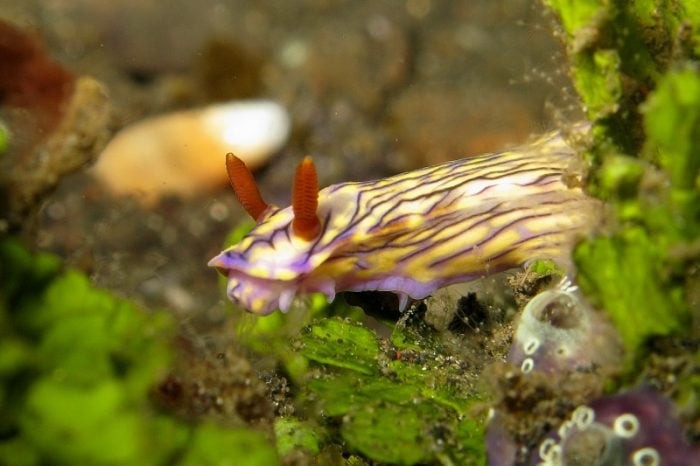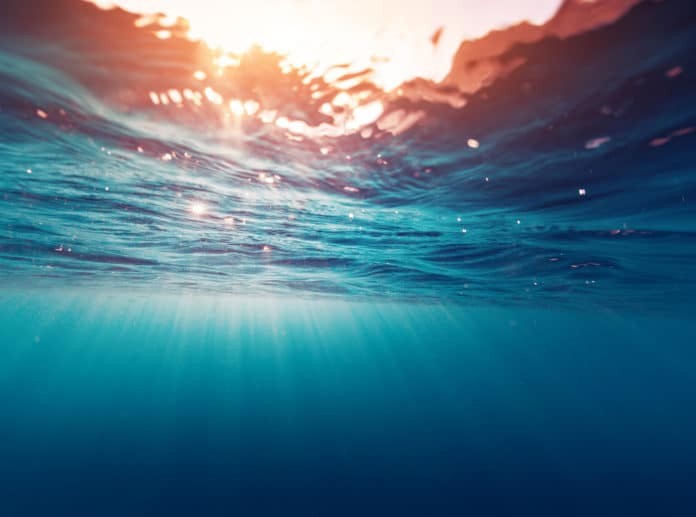To have a great dive, you need great visibility. There are many divers in the world that truly believe that. If visibility is less than 20 meters, they are disappointed. I am not one of those divers, to me, that is one of the “myths” of scuba diving pushed by tropical dive destinations. Most of my dives have been in visibility closer to 5 meters. Consider also, if you are diving inside of a wreck seldom can see beyond 5 meters regardless of the water clarity. Night dives, you are limited by the penetration of your light beam. On the night dive and the wreck penetration you accept the limited visibility, so why shy away from it on a regular dive.
If you are always diving in the tropics, then it may be that 20 to 30-meter visibility is what you are used to. That, however, is not what most divers experience. Outside of the tropics and the Arctic, visibility over 10 meters is rare. Many divers find most of their dives in lakes or quarries. The majority of these will also have poor visibility. To many divers, visibility is relative to the dive site. I recently read a dive report where the diver on a wreck off the New Jersey coast called 5-meter visibility as excellent. On some of my favorite dive sites, I would be happy with 5-meter visibility.
Diving 5-meter visibility vs 10 meters
So what the great hype of extended visibility. Yes, you can see that shark or turtle that is a distance away avoiding you. Still, when you are diving how far away are you really looking? To me, the biggest advantage of 10 meters visibility versus 5 meters is that it is easier keeping track of your dive buddy. Even with great visibility, what you see in the distance will have less color once you start going deeper. Poor visibility does reduce the amount of light you have to see with. I always have a small torch in my BCD pocket for when it is needed.
Macro Diving and Looking Close
Many years ago I took a short course in macro photography. I won’t say how many years ago it was but we were using cameras with 36 exposure rolls of film. Before we started the class, we assembled our dive gear at the end of a pier. The instructor then handed us a frame made of PVC pipe. Each side was a meter long and the corners had a short piece of fishing line with a fishing weight attached. We were told to gear up, enter the water and swim to the reef just off the end of the pier. There we were to place our frames carefully on the reef, staying at least 3 meters from the nearest frame, then return back to the pier. After we did so, we return to the dive shop’s classroom and had a few hours of classroom time.
One of the points made during the classroom time was observed was a key element in underwater photography. At the end of the lecture, we were given our hands-on task. We were to return to the frames we had placed and photograph only within the frame. We were to hover over or near our frames and shoot the 36 exposures. The dive time would be 45 minutes and we were expected to spend all of that time concentrating on our square meter of a reef. 45 minutes to take 36 photos using only a square meter of space sounded like it would be boring and a waste of time. In reality, it was a very interesting dive. I saw marine life that I had never seen before, things that I just overlooked.
It was my first real exposure to macro diving. Since then, I have done a number of other macro dives even without a camera. In the last few years, a form of macro diving called muck diving has become very popular. The term is said to have started in Milne Bay, Papua New Guinea, when divers on the MV Telita decided to dive where the boat was anchored near a river inlet. The bottom was a black sand with at first nothing interesting. However, on closer examination, the divers were amazed at the unique small creatures they saw.

The term has stuck and grown to include any uninteresting strata. Maarten de Brauwer in one of his published papers defines muck diving as “Scuba diving in soft sediment habitats with limited landscape features, with the explicit goal to observe or photograph rare, unusual, or cryptic species that are seldom seen on coral reefs.” Sounds better than muck.
Many locations around the world have become well known for their muck diving. Divers from all overcome just to experience it. But great visibility is not a requirement for muck diving, and many of these dive sites do have limited visibility.
Adjust Your Dive
I will admit there is a point where visibility can be so bad that it is time to abort a dive. If you become uncomfortable with the dive, then abort. If you keep losing sight of your dive buddy, then maybe it is best that you do abort the dive. No dive is worth a risk to your safety. However, if separation is not an issue, then maybe you should just pick a place, stay put and look closely at what is around you.
If you find that you feel uneasy in poor visibility, consider a course such as SSI’s Night Diving and Limited Visibility, RAID’s Night and Limited Visibility or PADI’s Night Diver. Any of these courses can help you with the skills you need and to boost your confidence in limited visibility.
I love having great visibility. However, I am comfortable in less than great visibility. If you are not, make it a diving goal. Unless the visibility is so poor that it becomes a safety issue or so poor you can not even see the small creatures, consider adapting your dive and explore what is around you.

